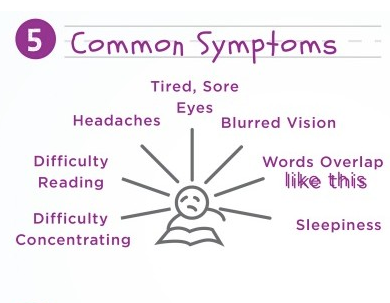Vision therapy
Vision therapy is a science-based practice designed to strengthen key visual skills, including object tracking and interpreting visual data. It is often useful for patients with:
- Post-concussion symptoms: directly related to post-trauma vision syndrome.
- Learning disabilities: especially affecting children.
- Amblyopia or strabismus: conditions that cause both eyes to look in different directions.
- Accommodative insufficiency: a condition that makes it difficult for the eyes to maintain or change focus during near vision tasks.
- Convergence insufficiency: a condition that prevents the eyes from coordinating with each other during near vision tasks.
A regular vision therapy appointment typically takes between 30 minutes to 1 hour. The first few sessions will be in our office, but many of the exercises we may teach you can also be done at home or in front of a computer.
All in-office sessions take place under the supervision of a qualified eye doctor. We may also use the following tools to measure your progress or help you improve your visual skills:
- Electronic targets controlled by timers
- Balance boards
- Therapeutic lenses
- Visual occluders or eye patches
- Filters and prisms

Symptom Survey
Curious if you have symptoms of a binocular vision disorder?

Vision therapy after concussion
Did you know that a concussion can significantly impact your vision?
Concussions can cause Post-Trauma Vision Syndrome, which can be treated with vision therapy.
The symptoms of PTVS include:
- Electronic targets controlled by timers
- Headaches
- Dizziness
- Double vision
- Light sensitivity
- Motion sensitivity
- Balance and depth perception issues
Once we’ve finished our assessment, we’ll tailor a vision therapy treatment plan for you to help alleviate your symptoms and get you seeing clearly again!

Vision therapy for children
Vision therapy has caused noteworthy improvements in patients with learning disabilities.
You or your child might see significant improvements from vision therapy if either of you struggles with the following problems:
- Often losing place or skipping small words when reading
- Text appearing to move on the page or drift in and out of focus when reading
- Becoming frustrated when reading or tending to avoid reading entirely
- Suffering from frequent eye fatigue and frontal headaches

Vision therapy for amblyopia & strabismus
Amblyopia or a lazy eye can be treated with vision therapy to train your
YouTube exercises
Post Concussion Vision Concerns
-
Difficulty Reading
Also called oculomotor dysfunction and accommodative dysfunction. Symptoms include trouble following moving objects or shifting focus between near and far distances.
-
Light Sensitivity
Concussions can affect the way the brain processes signals from the eyes. When these pathways are disrupted, the brain struggles to regulate light exposure properly, making normal light levels feel overwhelming.
-
Eyestrain and Headaches
Over 50% of the brain is involved in visual processing. Any visual dysfunction can contribute to headaches. Vision therapy can help strengthen visual pathways to improve vision and help you recover faster.
Children's Vision Articles
We care about your eye care.
Our mission is to help people have their best vision to live their best lives.




